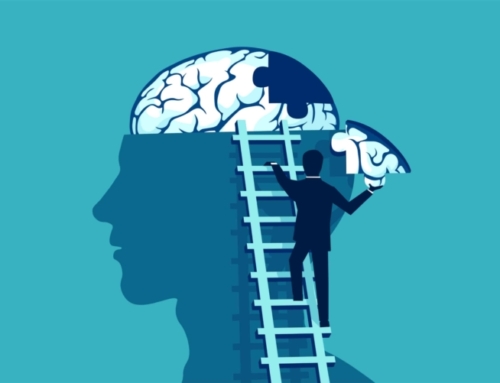Today I share my musings on increasing mental health treatment effectiveness. Psychiatric treatment almost always entails long term management of chronic conditions characterized by waxing and waning symptoms.
There is often no magic bullet and, so, many separate interventions should be deployed. The challenge is we cannot know beforehand which single intervention or combination of interventions will lead to the sought-for outcome. And, even in hindsight, outcomes cannot be confidently assigned to individual interventions because change is often due to the interactions occurring among multiple interventions, some of which may not even be identified because they lie in the background. Further, even if a single intervention is deployed and we can feel confident that it was this particular one that led to the sought-for outcome, often the mechanism of action of that intervention cannot be identified.
This state of affairs suggests that it is to the patient’s benefit to deploy more than one intervention. Of course, this approach is expected when done sequentially in the face of treatment non-response. But must we deploy interventions one at a time, being forced to wait for treatment failure before deploying another intervention? No; I think most of us would not choose to be so hemmed in. So, the question is how to decide which and how many interventions to deploy simultaneously, or nearly so.
One approach I take is to engage the patient in the treatment plan by asking the patient to identify their most vexing and painful problem and what they would most like to change in their life. I’ve written before about my fondness for the “miracle” question: “If you woke up tomorrow morning and a miracle occurred overnight that allowed you to have the life just as you want it to be, how would that life look?” This question often best cuts through the haze of complexity and the patient’s many non-foundational concerns and desires, and instead points to ultimate goals and concrete solutions. Another rule of thumb I use is to deploy one medicine, one therapeutic intervention, and one social intervention simultaneously or in proximity. I optimize each before the patient and I assess progress and decide on next steps.
I now shift to another implication about our collective inability to know which treatment intervention or regimen of interventions will lead to best and quickest change. And that is the need to become aware of placebo and nocebo effects and to the effects of background factors.
Here is one dramatic example of our collective inability to identify therapeutic mechanisms and mediators: all psychotherapies have been found to be nearly equivalent in effectiveness, even ones whose interventions seem to be in opposition to each other 1,2.
As far back as 1936, psychotherapy researcher Saul Rozensweig3 noticed and wrote about this psychotherapeutic equivalence, coining a term “The Dodo Bird Conjecture.” This metaphor was based on the Dodo bird character in Alice in Wonderland, in which the Dodo bird holds a race but does not track how far each contestant has run nor how fast. In response to grumblings, the Dodo bird announces, “”Everybody has won and all must have prizes.” Thus, Rozenswieg held the same is true for psychotherapies and proposed that the beneficial outcomes are due to “common factors,” a concept that continues to hold sway today. These common factors include a positive patient-clinician relationship, a patient’s expectation of positive change, mutual trust between clinician and patient, the clinician’s understanding of the patient and the patient’s feeling of being understood, and the patient’s belief in the expertise of the clinician.
Thus, one approach to improve treatment effectiveness is to act in ways that increase these common factors. Note that although this concept of common factors was developed to address the paradox of equivalent outcomes in psychotherapy, it likely applies to psychiatric treatment in general, including to the clinic communications and actions that occur prior to the start psychiatric treatment. This establishing of positive expectations can include how the clinic website looks and what messages it conveys, how the patient is treated when they call to schedule their first appointment, how the waiting room looks and how the patient is treated by the reception staff, and how long the patient must wait to see the clinician. Then, of course, the interactions between clinician and patient begin. Factors now added include how the clinician is seen to interact with other patients and staff, how the clinician is dressed and groomed, and how the clinician introduces themselves to the patient, among many others. And, of course, throughout treatment many more expectations are formed.
The placebo effect is ultimately due to positive expectations of change and the downstream effects of such an expectation. Now, one might ask how a positive expectation leads to other positive changes, such as reduced psychiatric symptoms and increased coping and other functions. First, though, we must explore the nature of positive expectation. This is a cognitive bias of what the future will bring. Many patients with mental illness hold negative expectation biases, including that treatment will be ineffective. This is commonly maintained through confirmation bias, in which a person selectively attends to and interprets phenomena supportive of their existing (negative) expectations. Component biases include attentional bias, interpretive bias, and attribution bias. Still another bias often involved is what could be called the ‘lack of agency’ bias, in which a person underestimates the degree to which they have the power to bring about change. The nature of one’s thoughts effects the types of feelings one has and the types of behaviors one engages in. CBT is based on this cognitive hypothesis. Thus, changing expectations changes feelings and behaviors and, in turn, these positive emotional and behavioral changes support the newly forming positive expectation bias, which in time, can form a new confirmation bias, this time, of positive change. These changes result in what is called a self-fulfilling prophecy, perhaps a nonintentional “fake it ‘til you make it” phenomenon.
Now, let’s turn our attention to the placebo and nocebo effects. The placebo effect refers to a positive change in the patient’s symptoms and function due to positive changes in the patient’s cognitive biases, including to their expectation bias. The nocebo effect refers to a negative change in the patient’s symptoms and function due to adverse changes to the patient’s cognitive biases, including in their expectation bias. To stress, these placebo and nocebo expectation effects occur not only within active treatment interventions but also within interventions without any active mechanism of action other one possibly leading a change in expectation. We call these latter treatments sham treatments. So, placebo and nocebo effects occur in both evidence-supported treatments like CBT and medications, but also in sham treatments. Perhaps somewhat confusingly, when we administer sham treatments with the goal of triggering a placebo effect, we call them placebos or placebo treatments. But, to stress, whether a treatment functions as a placebo, a nocebo, or neither, is not directly up to us, but rather to how the patient experiences these treatments and how that changes their expectation biases.
Now, even further. Placebo and nocebo effects arise not only in the context of active and sham treatments, but also apply to peripheral factors that neither clinician nor patient would ever identify as playing a role in shaping treatment outcomes. Such seemingly peripheral issues can include the background music that plays in the waiting room, the fact that you have a little gurgling fountain in a corner of your office, the fact that you ceremoniously hand the patient your business card, the fact that you remind the patient of their parent or beloved aunt or uncle, or of their first love, or conversely, of someone who harmed, disrespected, or betrayed them.
These factors are so numerous and often so subtle as to be missed. However, when the clinician is aware of that many background factors that can affect outcomes exist, the clinician can attend to cues that expose them. Many background factors can be gradually identified during treatment. What is required is a clinician attuned to reading non-verbal cues, such as body posture, facial expression, and voice modulation as well as verbal cues, ones in which the patient makes statements that fly below the radar – statements that seem off-topic, off-the-cuff, or fall outside the treatment frame, such as made while walking from waiting room to clinician office or made to staff with the expectation that the clinician will overhear them.
To return to the concept of common factors in psychotherapy (and psychiatric treatment more generally), they are based to large degree on expectation biases and their related emotional and behavioral effects. As such, they are a complex of placebo effects (when positive) and nocebo effects (when negative). And we’ve all had patients who failed therapy and now refuse it and even hate the thought of it. For them, the common factors of therapy started to go wrong and cascaded down into one big nocebo effect.
Before I end, I’d like to ask you to consider what you can do to increase your patients’ trust in you and in your treatment interventions and to increase your patients’ positive expectations of change. I have many of my own thoughts on how each of these common factors should be managed but will not share them now. I am sure you have many of your own ideas. And I welcome hearing from you if you wish to share your approaches with me and other readers.
- Barth, J., Munder, T., Gerger, H., Nuesch, E., Trelle, S., Znoj, H., et al. (2013). Comparative efficacy of seven psychotherapeutic interventions for patients with depression: a network meta-analysis. PLoS Med. 10:e1001454. doi: 10.1371/journal.pmed.1001454
- Cuijpers, P., van Straten, A., Andersson, G., and van Oppen, P. (2008). Psychotherapy for depression in adults: a meta-analysis of comparative outcome studies. J. Consult. Clin. Psychol. 76, 909–922. doi: 10.1037/a0013075
- Rosenzweig, S. (1936). Some implicit common factors in diverse methods of psychotherapy. Am. J. Orthopsychiatry 6, 412–415. doi: 10.1111/j.1939-0025.1936. tb05248.x
Thanks and take care.
Dr. Jack
Language Brief
“Blessed is he who expects nothing, for he shall never be disappointed.” ― Alexander Pope
“If you spent your life concentrating on what everyone else thought of you, would you forget who you really were? What if the face you showed the world turned out to be a mask… with nothing beneath it?” ― Jodi Picoult
“You are most powerful when you are most silent. People never expect silence. They expect words, motion, defense, offense, back and forth.” ― Alison McGhee
“To wish was to hope, and to hope was to expect” ― Jane Austen
“Everyone wanted me to feed them that story—darkness to light, weakness to strength, broken to whole. I wanted it, too.” ― John Green







Leave A Comment